Alsace, a region located in the north-east of France, is renowned for its cultural and gastronomic wealth. The festive Alsatian meals, in particular, are emblematic of the regional identity and are distinguished by generous and tasty dishes, often influenced by the neighbouring German traditions. Among these dishes, sauerkraut is a prime place, but it is not the only specialty that delights gourmets on special occasions.
Choucroute: Emblematic dish of Alsace
Choucroute is probably the most famous dish of Alsatian cuisine. It is often the heart of festive meals, especially during large family celebrations and seasonal celebrations such as Christmas or New Year’s Eve.
Origins and Preparation:
The sauerkraut, or “Sürkrüt” in Alsatian, was originally a peasant dish. It consists of fermented cabbage, a traditional method of conservation that goes back centuries. This cabbage, finely cut and fermented in brine, becomes the base of a hearty dish when cooked with various meats.
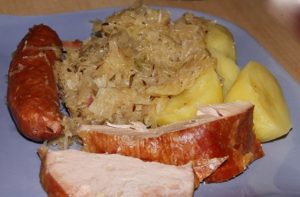
The most common version, sauerkraut garnished, is composed of cabbage cooked long with spices (juniper berries, cloves, pepper) and meats, mainly pork in different forms: lard, shank, sausages (like knack), and sometimes even ham or smoked palette. Usually accompanied by potatoes cooked in water or steamed.
Festive Variants:
There are several varieties of sauerkraut, adapted to taste and season. Among them, the sea sauerkraut, where cabbage is served with various fish (salmon, haddock, shrimp) and seafood, is a lighter alternative, often chosen for more refined festive occasions.
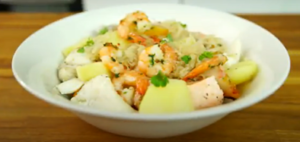
Other Regional Specialities
Apart from sauerkraut, Alsace offers a variety of festive dishes that highlight local products and culinary know-how of the region.
- The Baeckeoffe:
Baeckeoffe is another emblematic dish of the festive Alsatian meals. It is a meat stew (usually a mixture of pork, beef and lamb) marinated in white wine and cooked slowly with potatoes, onions and carrots. The whole is enclosed in a terracotta terrine and baked for a long time, traditionally by the baker (hence its name, “baker’s oven” in Alsatian).
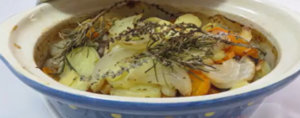
- Foie Gras:
Alsace is one of the best known regions in France for the production of foie gras. This delicate dish, often prepared for the end of the year, is served in a terrine with gingerbread or brioche and often topped with a fig chutney or onion confit.
- The Kougelhopf:
This brioche cake with raisins and almonds, baked in a crown-shaped clay mold, is another Alsatian specialty. Traditionally served on special occasions, Kougelhopf can be sweet or savoury (with bacon and nuts) and goes well with breakfasts as well as festive meals.
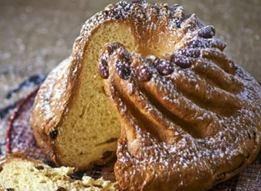
- Les Bredele:
These small biscuits are prepared in large quantities during the Advent period in Alsace. There are a multitude of varieties, flavoured with cinnamon, anise, chocolate or hazelnuts. They are often offered as a gift or enjoyed with a glass of mulled wine during the Christmas holidays.

- Flammekueche:
Although often eaten in all seasons, tarte flambée is also present at festive gatherings. It is made of a thin bread dough covered with cream, onions and bacon, then cooked at high temperature in a wood oven. Variations include versions with cheese or sweetened, with apples and cinnamon.
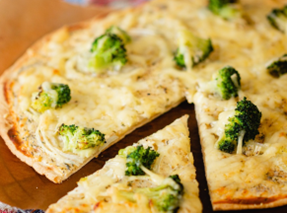
The Art of Table in Alsace
Festive meals in Alsace are not only about food, but also about the art of the table. The tables are often decorated with tablecloths and napkins with traditional Alsatian motifs, and meals are accompanied by the best wines of the region, including Gewurztraminer, Riesling or “Crémant d’Alsace”.
The Alsatians attach great importance to conviviality. Festive meals often last several hours, with each dish being eaten slowly in a warm atmosphere where discussions are well underway.
In conclusion, the festive meals in Alsace are a true tribute to the gastronomic wealth of the region. Whether it’s sauerkraut, Baeckeoffe or delicious pastries like Kougelhopf, each dish is a testament to the expertise and passion of Alsatians for cooking. These meals are an opportunity to celebrate, share and perpetuate the traditions that make this unique region of France proud.
Some references
- “La Cuisine alsacienne” by Simone Morgenthaler. La Nuée Bleue, 2011
- “La Choucroute : Histoire et recettes” by Guy Untereiner. Ediions de la Tour Blanche, 2005
- “Saveurs d’Alsace” by Thierry Mulhaupt. Glénat, 2016